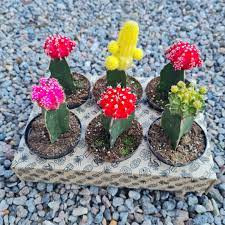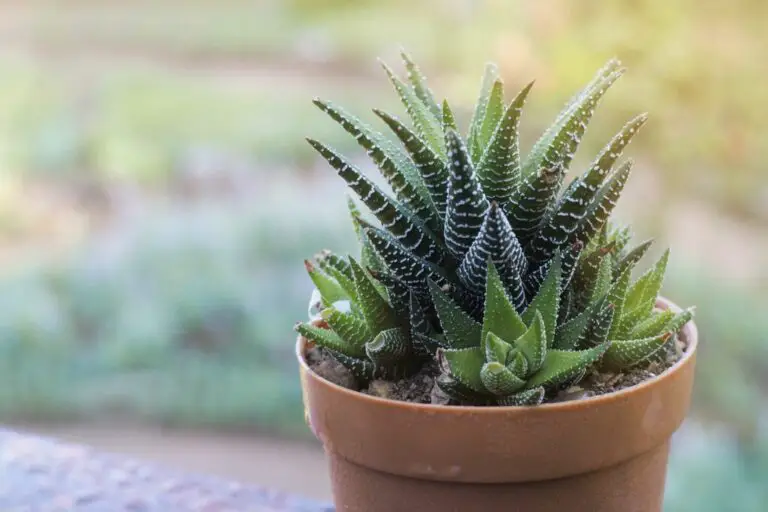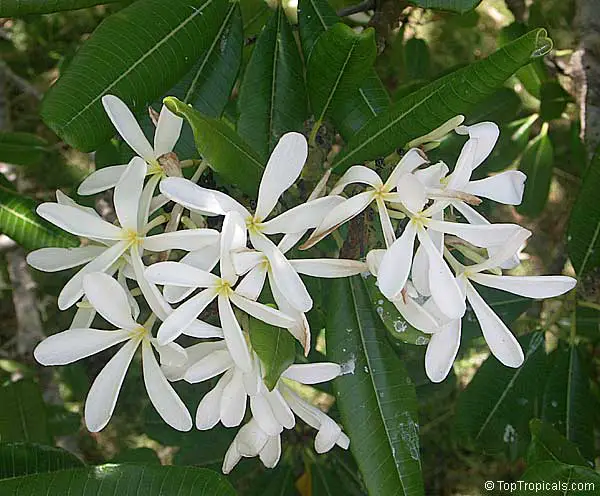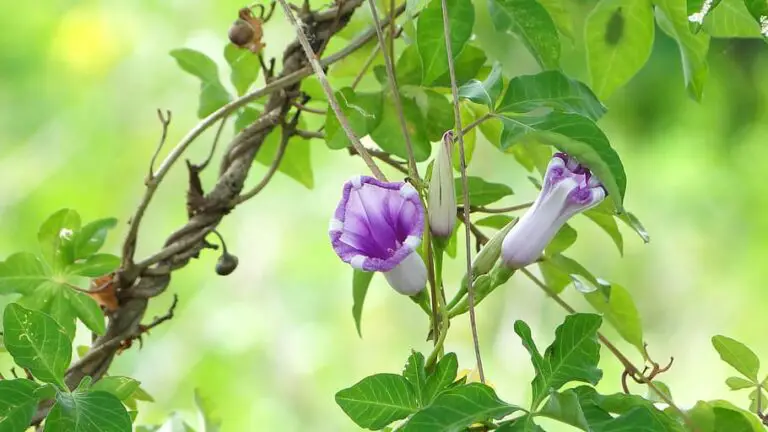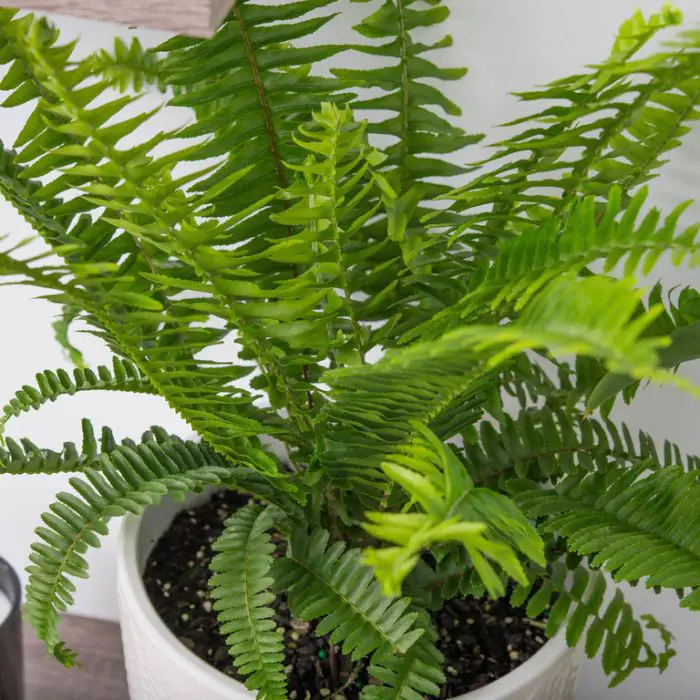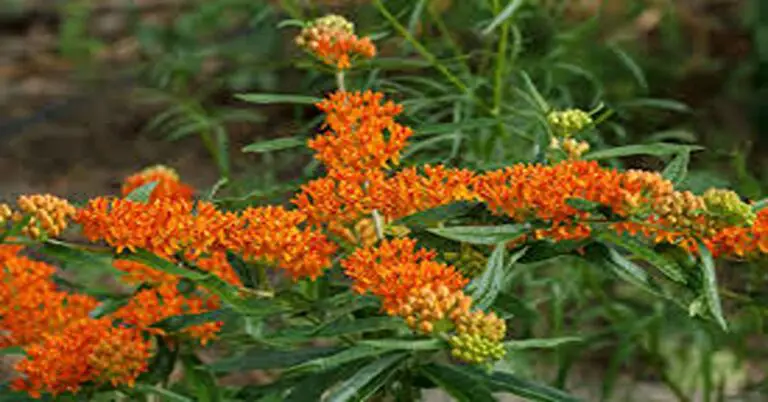Introduction to the White Chenille Plant: Unveiling Nature’s Elegance
The White Chenille Plant, scientifically known as Acalypha hispida ‘Alba,’ is a captivating ornamental shrub that enchants garden enthusiasts with its distinctive charm. This remarkable plant is characterized by its pendulous, fuzzy white blooms resembling soft caterpillars, earning it the endearing nickname “White Chenille.” With a penchant for warm climates, the White Chenille Plant boasts a tropical allure that can transform any landscape into a lush paradise.
A Closer Look at its Appearance and Growth Habits
Standing at an average height of two to five feet, the White Chenille Plant flaunts elongated, ovate leaves with serrated edges, adding to its visual appeal. Its unique blooms, resembling cascading tassels of pristine white, stand out against the lush green foliage, creating an eye-catching contrast. The plant’s growth habits are bushy and dense, making it an excellent choice for hedges, borders, or standalone ornamental specimens. Its rapid growth rate and ability to thrive in well-draining soil further contribute to its popularity among gardeners.
Versatile Landscaping Applications
The White Chenille Plant finds its place as a versatile asset in the realm of landscaping. Its elegant appearance allows it to shine as a focal point in gardens, where its fluffy blossoms can draw attention and admiration. Moreover, it can be creatively incorporated into mixed beds or borders to provide texture and height variation. Whether as an accent plant near water features, a standalone shrub in a courtyard, or part of a lush tropical garden, the White Chenille Plant’s adaptability knows no bounds.
A Glimpse into Popular Uses
Beyond its aesthetic appeal, the White Chenille Plant offers valuable functions in landscaping. Its dense foliage and cascading blooms create an effective visual screen, adding privacy and intimacy to outdoor spaces. The softness of its blooms adds a touch of whimsy, making it an ideal candidate for children’s gardens or play areas. Additionally, its attractiveness to pollinators like butterflies and bees contributes to the overall health and biodiversity of the garden ecosystem.
Caring for White Chenille Plants: Nurturing Nature’s Elegance
Caring for White Chenille Plants (Acalypha hispida ‘Alba’) is an art that yields rewarding beauty and health. With the right attention and care, you can ensure these remarkable plants thrive and grace your landscape with their distinctive charm.
Watering Essentials
Proper watering is key to the well-being of your White Chenille Plants. While they enjoy consistently moist soil, it’s important to avoid waterlogging, which can lead to root rot. During the growing season, water them when the top inch of soil feels dry to the touch. In hotter months, more frequent watering may be necessary to combat dehydration. Adjust your watering routine during winter when the plant enters a period of reduced growth.
Sunlight and Location
Finding the perfect spot for your White Chenille Plants is crucial. They thrive in full to partial sunlight, so choose a location where they receive at least 4-6 hours of direct sunlight daily. Avoid exposing them to harsh midday sun, as it can scorch the delicate leaves. If growing indoors, place them near a bright window where they can bask in filtered sunlight.
Soil Requirements
The right soil provides the foundation for healthy growth. Opt for well-draining soil that retains moisture without becoming waterlogged. A mix of potting soil, peat moss, and perlite or sand can create an ideal growing medium. Regularly check the soil’s moisture level and adjust your watering routine accordingly.
Maintenance Tips
Maintaining the allure of your White Chenille Plants involves some basic upkeep. Pruning is essential to promote bushy growth and encourage the development of new blooms. Trim back leggy growth and spent flowers to encourage a neat and vibrant appearance. Regularly inspect the plants for signs of pests and diseases, as prompt action is crucial to preserving their health.
By following these comprehensive care guidelines, you’ll be well on your way to nurturing your White Chenille Plants into stunning, flourishing specimens that captivate with their elegant beauty.
Ultimate Guide To Caring For Chenille Plants: Growing Tips And Varieties
Propagation Methods for White Chenille Plants: Cultivating Nature’s Beauty
Expanding your collection of White Chenille Plants can be a fulfilling endeavor, and understanding the various propagation methods can help you propagate these captivating beauties effectively.
Propagation from Cuttings
One of the most popular methods of propagating White Chenille Plants is through cuttings. Follow these steps for success:
- Select Healthy Cuttings: Choose a healthy stem with several nodes, preferably from the parent plant’s newer growth.
- Prepare the Cutting: Using clean and sharp pruning shears, take a cutting that’s around 4-6 inches in length.
- Remove Leaves: Trim off the leaves from the lower half of the cutting to expose the nodes.
- Rooting Medium: Plant the cutting in a well-draining rooting medium, such as a mix of perlite and peat moss.
- Provide Humidity: Cover the cutting with a plastic bag or a propagator to create a humid environment.
- Root Development: Place the cutting in a warm, bright area with indirect sunlight and mist the cutting occasionally.
- Transplanting: Once roots have developed, usually in a few weeks, transplant the cutting into a larger pot with regular potting soil.
Propagation from Seeds
While a bit more challenging, propagating White Chenille Plants from seeds can be rewarding. Here’s how:
- Seed Collection: Collect mature seeds from the plant’s flowers.
- Prepare the Soil: Fill a seed tray or small pots with a well-draining seed-starting mix.
- Sow the Seeds: Gently press the seeds into the soil’s surface and cover them lightly with a thin layer of soil.
- Mist and Cover: Mist the soil to ensure moisture and cover the tray with plastic wrap or a transparent lid to create a mini-greenhouse effect.
- Provide Light: Place the tray in a warm and bright location with indirect sunlight.
- Seedling Care: Once the seedlings emerge, remove the plastic cover and continue to provide bright, filtered light.
- Transplanting: When the seedlings have grown large enough, transplant them into individual pots.
Propagation by Division
Dividing White Chenille Plants can rejuvenate older plants and create new ones. Here’s how:
- Choose a Mature Plant: Select a mature White Chenille Plant that has multiple stems.
- Prepare the Plant: Carefully remove the plant from its pot and gently shake off excess soil to expose the roots.
- Division: Use a clean, sharp knife or pruning shears to divide the plant into sections, ensuring each section has roots and stems.
- Repotting: Plant each divided section into its own pot with fresh potting soil.
- Watering: Water the newly divided plants thoroughly and place them in a location with indirect light.
- Care: Continue to care for the divided plants as you would for mature plants.
By following these propagation methods with patience and care, you can successfully multiply your White Chenille Plants and share their captivating beauty with others.
Landscaping with White Chenille Plants: Crafting Timeless Outdoor Beauty
Integrating the elegance of White Chenille Plants (Acalypha hispida ‘Alba’) into your garden or outdoor space offers an exciting canvas for creativity and visual impact. Discover ingenious ways to infuse these plants into your landscape design, enhancing its allure with a touch of natural splendor.
Focal Points and Accents
White Chenille Plants can command attention as captivating focal points. Placing them at strategic locations, such as entrances or corners, draws the eye and adds a sense of grandeur. Combine them with bold foliage or vibrant blooms to create a striking contrast that elevates the impact.
Borders and Edges
Designing with White Chenille Plants along borders or edges imparts a sense of continuity and structure to your landscape. Their cascading blooms create soft, inviting boundaries that guide the eye and define spaces. Mix them with other complementary plants for a harmonious border that radiates elegance.
Mixing Textures and Heights
White Chenille Plants excel in lending textural depth to gardens. Pair them with plants of varying heights, such as ornamental grasses, to create a multi-dimensional visual experience. The feathery blooms of the White Chenille Plants blend seamlessly with the contrasting textures of grasses, generating a landscape that’s visually dynamic and inviting.
Water Features and Rock Gardens
The ethereal beauty of White Chenille Plants can be magnificently enhanced when juxtaposed with water features or in rock gardens. Placing them near ponds, fountains, or streams introduces a serene aesthetic that mirrors the tranquil quality of water. Amidst rock formations, their flowing blooms create a captivating juxtaposition against the rugged terrain.
Containers and Pots
Utilizing White Chenille Plants in containers and pots adds a touch of sophistication to patios, balconies, or any confined space. These versatile plants thrive in pots, making them an excellent choice for those with limited garden areas. Pair them with other flowers or ornamental foliage to create stunning visual displays.
Year-Round Appeal
Embrace the evergreen nature of White Chenille Plants by integrating them into designs that ensure year-round visual appeal. Their persistent foliage and cascading blooms can provide a sense of continuity even in changing seasons, enhancing the overall aesthetics of your outdoor space.
Common Pests and Diseases of White Chenille Plants: Guarding Nature’s Elegance
White Chenille Plants (Acalypha hispida ‘Alba’) are captivating additions to any landscape, but like all plants, they can face challenges from pests and diseases. It’s crucial to be aware of these potential issues, along with effective preventive strategies and treatments.
Pests to Watch Out For
- Aphids: These tiny insects can cluster on the undersides of leaves, sucking out plant juices and causing distortion.
- Mealybugs: These pests appear as white, cotton-like clusters and feed on plant sap, weakening the plant.
- Whiteflies: They’re small, white insects that hover around the plant and suck sap, leading to yellowing leaves and stunted growth.
Disease Concerns
- Powdery Mildew: This fungal disease manifests as a white, powdery substance on leaves, affecting photosynthesis.
- Leaf Spot: Fungal or bacterial infections can lead to dark spots on leaves, potentially causing defoliation.
- Root Rot: Overwatering or poor drainage can result in root rot, causing the plant to wilt and decline.
Preventive Measures
- Regular Inspection: Regularly check your White Chenille Plants for signs of pests or diseases. Early detection is key to effective management.
- Proper Watering: Avoid overwatering, which can create conditions favorable for fungal growth. Water at the base of the plant to keep foliage dry.
- Good Air Circulation: Ensure adequate spacing between plants to promote air circulation and reduce humidity, discouraging disease development.
- Sanitation: Remove and dispose of any infected or infested plant parts promptly to prevent the spread of pests and diseases.
Treatment Options
- Natural Remedies: For mild infestations, consider using neem oil, insecticidal soap, or a mixture of water and mild dish soap to control pests.
- Chemical Treatments: If the infestation is severe, chemical insecticides labeled for the specific pest can be used, following manufacturer instructions.
- Fungicides: If diseases are prevalent, apply fungicides as recommended by professionals to prevent the spread of fungal infections.
By understanding these potential challenges and adopting proactive measures, you can ensure your White Chenille Plants remain resilient and flourish with their natural elegance intact. Regular care and vigilance will go a long way in maintaining the health and beauty of these remarkable plants.
Symbolism and Cultural Significance of White Chenille Plants: Unveiling Hidden Meanings
Beyond their botanical allure, White Chenille Plants (Acalypha hispida ‘Alba’) hold a rich tapestry of symbolism and cultural significance in various societies and traditions. Exploring these hidden meanings offers a deeper appreciation for these captivating plants.
Purity and Innocence
In many cultures, the color white is associated with purity, innocence, and cleanliness. The delicate white blooms of the Chenille Plant mirror these attributes, symbolizing a sense of untainted beauty and a fresh start. In weddings and ceremonies, the presence of White Chenille Plants can symbolize the pure intentions and new beginnings of a couple embarking on their journey together.
Spiritual Transformation
Some spiritual traditions view the process of transformation and growth as symbolic of a journey toward enlightenment. The Chenille Plant’s remarkable lifecycle, from its tender buds to its cascading blooms, can be seen as an allegory for spiritual evolution and self-discovery. Its elegant form and blooming process reflect the unfolding of consciousness and the pursuit of higher states of being.
Cultural Diversity
In various societies, the White Chenille Plant takes on unique meanings. In some Asian cultures, the pendulous flowers are likened to flowing water, symbolizing fluidity, adaptability, and the ability to navigate life’s challenges with grace. In other contexts, its soft and whimsical appearance is linked to the idea of embracing playfulness and joy in everyday life.
Healing and Well-Being
In holistic and alternative medicine, plants often hold symbolic and healing qualities. The Chenille Plant’s feathery blooms can be associated with lightness and ease, reminding us to let go of burdens and worries. Some cultures may use the plant’s essence or leaves for their perceived medicinal properties, integrating its symbolism of healing into practical wellness practices.
Environmental Harmony
White Chenille Plants’ role in gardens and landscapes can symbolize harmony between human activity and the natural world. By incorporating these plants into outdoor spaces, individuals express a desire to coexist with nature while enhancing the beauty of their surroundings.
White Chenille Plants in Floral Arrangements: Adding Texture and Elegance
The inclusion of White Chenille Plants (Acalypha hispida ‘Alba’) in floral arrangements and bouquets unveils a world of creativity and aesthetic beauty. Their distinctive texture and graceful appearance make them a sought-after addition to various floral designs.
Creating Unique Texture
White Chenille Plants bring an element of uniqueness to floral arrangements with their soft and feathery blooms. When combined with other flowers, their cascading tassels create an intriguing contrast against the more traditional petals. This dynamic texture adds depth and dimension to arrangements, capturing attention and offering a delightful sensory experience.
Enhancing Aesthetic Appeal
Incorporating White Chenille Plants into bouquets imparts an ethereal elegance that elevates the overall aesthetic. Their gentle white blossoms exude a sense of purity and delicacy, enhancing the visual impact of the arrangement. Whether used as a focal point or as an accent, these plants effortlessly infuse a touch of sophistication.
Versatility in Arrangements
From minimalist modern arrangements to lavish traditional bouquets, White Chenille Plants seamlessly adapt to various design styles. They can be paired with vibrant flowers to create a striking contrast or combined with soft pastels for a serene and romantic ambiance. The versatility of White Chenille Plants makes them a valuable asset to professional florists and DIY enthusiasts alike.
Bridal Bouquets and Special Occasions
White Chenille Plants hold a special place in bridal bouquets and arrangements for special occasions. Their symbolism of purity and new beginnings aligns perfectly with the sentiment of weddings. These plants offer brides and event planners a creative way to infuse meaning and elegance into floral arrangements, making the day even more memorable.
Longevity and Drying
One of the remarkable aspects of White Chenille Plants is their suitability for drying. Their feathery blooms retain their shape and texture when dried, allowing them to be used in dried flower arrangements that last long after the event. This unique feature adds to their value, as they continue to bring beauty to spaces even after their initial use.
Comparing White Chenille Plant Varieties: Unveiling Floral Diversity
Diving into the world of White Chenille Plants (Acalypha hispida ‘Alba’) reveals a spectrum of variety and charm. Exploring different cultivars and varieties not only showcases their distinct characteristics but also adds depth to your botanical appreciation.
Size Matters
Among the array of White Chenille Plant varieties, differences in size emerge as a notable feature. While some cultivars remain compact and suited for smaller spaces, others embrace a more substantial stature, reaching heights of up to five feet. This variation in size allows for flexible landscaping, catering to both petite gardens and more spacious outdoor settings.
Shape and Form
The diversity of White Chenille Plants extends to their forms and shapes. Some varieties boast a more upright growth habit, with blooms arranged along the length of the stems. Others exhibit a more cascading structure, where the flowers drape elegantly downward, reminiscent of a flowing waterfall. These differences in shape contribute to the visual dynamics of garden designs.
Flowering Patterns
Flowering patterns among White Chenille Plant varieties offer an array of visual experiences. Some cultivars may produce longer, more extended blooms, creating a dramatic and eye-catching display. Others might present shorter, denser flowers that evoke a sense of lushness and abundance. These flowering variations allow for the creation of diverse and captivating flowerbeds.
Leaf Texture and Color
While the blooms of White Chenille Plants are undoubtedly captivating, leaf texture and color also contribute to their overall appeal. Some varieties showcase leaves with serrated edges, adding texture and visual interest. The shades of green can vary, ranging from deep emerald to lighter hues, further enriching the plant’s aesthetic value.
Selecting the Perfect Variety
Choosing the right White Chenille Plant variety involves considering your garden’s size, style, and design preferences. Compact cultivars are ideal for small spaces or containers, while larger varieties shine as focal points or border plants. By exploring the diverse options available, you can select the variety that harmonizes with your vision and contributes to the overall beauty of your landscape.
In conclusion, the world of White Chenille Plant varieties unfolds a captivating array of sizes, shapes, flowering patterns, and leaf characteristics. This diversity empowers gardeners to curate landscapes that are uniquely expressive and visually engaging, ensuring that every outdoor space reflects the beauty of nature’s remarkable variations.
Seasonal Care Guide for White Chenille Plants: Nurturing Year-Round Beauty
Ensuring the thriving beauty of White Chenille Plants (Acalypha hispida ‘Alba’) year-round requires adapting care practices to the changing seasons. By tailoring your approach to the specific needs of each season, you can enjoy their elegant presence in your landscape all year long.
Spring Awakening
As the weather warms and new growth emerges, spring is a pivotal time for White Chenille Plants. Follow these steps to nurture their growth:
- Pruning: Trim any dead or damaged branches to encourage fresh growth and maintain an attractive shape.
- Fertilization: Apply a balanced, slow-release fertilizer to provide essential nutrients for the upcoming growing season.
- Watering: Increase watering frequency as temperatures rise, ensuring the soil remains consistently moist but not waterlogged.
- Inspect for Pests: Regularly examine the plants for signs of pests, such as aphids or mealybugs, and take appropriate action if needed.
Summer Splendor
During the heat of summer, White Chenille Plants require extra attention to withstand the stress of high temperatures:
- Water Management: Water deeply and consistently to prevent dehydration, especially during prolonged dry spells.
- Mulching: Apply a layer of organic mulch around the base of the plants to conserve soil moisture and reduce weed growth.
- Sun Protection: Shield the plants from intense midday sun to prevent sunburn on leaves.
- Pruning: Continue to trim any leggy growth and spent flowers to maintain a tidy appearance.
Fall Preparation
As autumn approaches, White Chenille Plants prepare for a period of dormancy. Your care efforts should focus on preparing them for the cooler months:
- Reduced Watering: Gradually reduce watering frequency as temperatures begin to cool and growth slows down.
- Fertilization: Apply a phosphorus-rich fertilizer to promote root development during the dormant season.
- Protection from Frost: If you live in an area prone to frost, consider covering the plants overnight to prevent damage.
Winter Care
During winter, White Chenille Plants experience a restful phase, but they still need some care to ensure their well-being:
- Minimal Watering: Water sparingly, only when the soil becomes dry to the touch.
- Pruning: Remove any dead or diseased branches to maintain plant health and shape.
- Monitoring: Keep an eye out for signs of pests or diseases, which can be more challenging to manage during colder months.
By embracing this seasonal care guide, you’ll provide the optimal conditions for your White Chenille Plants to flourish throughout the year. Tailoring your care practices to each season’s demands ensures that their natural elegance graces your landscape with enduring beauty.
Seasonal Care Guide for White Chenille Plants: Nurturing Beauty Year-Round
Tending to the flourishing health of White Chenille Plants (Acalypha hispida ‘Alba’) requires a comprehensive approach that adapts to the shifting seasons. By tailoring your care routine to suit the unique needs of each season, you can ensure these elegant plants thrive and grace your landscape with their timeless allure.
Spring Awakening
As spring breathes new life into the surroundings, White Chenille Plants awaken with vitality. Follow these guidelines to foster their growth:
- Pruning: Trim away any dead or damaged growth to encourage fresh shoots and maintain a pleasing shape.
- Fertilization: Apply a balanced, slow-release fertilizer to supply essential nutrients during the active growing season.
- Watering: Increase watering frequency as temperatures rise, ensuring the soil remains evenly moist but not waterlogged.
- Pest Check: Regularly inspect for pests like aphids or mealybugs and take prompt action if necessary.
Summer Vigilance
Amidst the summer heat, White Chenille Plants require heightened attention to thrive:
- Water Management: Water deeply and consistently, ensuring the soil remains hydrated in the heat.
- Mulching: Apply a layer of organic mulch around the base of the plants to retain moisture and discourage weeds.
- Sun Protection: Shield the plants from intense midday sun to prevent leaf scorch.
- Pruning: Continue to trim spent flowers and leggy growth to maintain a neat appearance.
Fall Transition
As autumn approaches, White Chenille Plants prepare for a period of rest. Care for them in these ways:
- Reduced Watering: Gradually decrease watering frequency as temperatures cool and growth slows.
- Fertilization: Apply a phosphorus-rich fertilizer to encourage root development during dormancy.
- Frost Precautions: If frost is a concern, consider covering the plants overnight to shield them from potential damage.
Winter Respite
During winter, White Chenille Plants experience a quieter phase, yet they still need some care:
- Minimal Watering: Water sparingly, only when the soil becomes dry to the touch.
- Pruning: Remove any dead or diseased branches to maintain the plant’s health and appearance.
- Vigilant Monitoring: Watch for signs of pests or diseases, which can be more challenging to manage in colder months.
By following this comprehensive seasonal care guide, you provide the best possible conditions for your White Chenille Plants to thrive. Tailoring your care regimen to each season’s demands ensures that these stunning plants continue to grace your landscape with their enduring charm throughout the year.
Q: I can grow Chenille Plants indoor?
Yes, you can definitely grow Chenille Plants (Acalypha hispida) indoors, but it’s important to consider a few factors to ensure their successful growth and health in an indoor environment.
Light Requirements: Chenille Plants thrive in bright, indirect light. Place them near a window that receives filtered sunlight or brighten the room with artificial light if natural light is limited. Avoid placing them in direct sunlight, as this can scorch their delicate leaves.
Temperature: Chenille Plants prefer warm temperatures. Keep them in a room where the temperature ranges between 65-80°F (18-27°C). Avoid exposing them to drafts or sudden temperature fluctuations.
Humidity: These plants appreciate higher humidity levels. If the air in your home is dry, consider using a humidity tray, a room humidifier, or mist the plant regularly to maintain a humid environment.
Soil: Use a well-draining potting mix that retains moisture without becoming waterlogged. A mix formulated for tropical plants or a combination of potting soil, peat moss, and perlite can work well.
Watering: Keep the soil consistently moist but not soggy. Water the plant when the top inch of soil feels dry to the touch. Ensure that the pot has proper drainage to prevent waterlogging.
Pruning: Regularly trim back leggy growth and spent flowers to encourage bushy growth and maintain the plant’s appearance.
Fertilization: During the growing season (spring and summer), feed your Chenille Plant with a balanced liquid fertilizer every 4-6 weeks. Reduce or stop fertilizing during the winter months when the plant’s growth slows down.
Pest and Disease Management: Keep an eye out for common indoor plant pests like aphids, mealybugs, and spider mites. Inspect the plant regularly and treat any issues promptly to prevent them from spreading.
Pot Size: Choose a pot that allows for some growth but isn’t excessively large. Transplant the plant into a slightly larger pot when it becomes root-bound.
By providing the right conditions and care, you can successfully grow Chenille Plants indoors and enjoy their unique beauty as part of your indoor plant collection.

